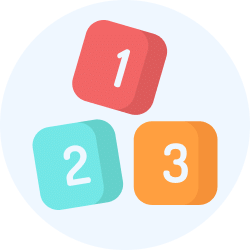Class 1 Exam > Class 1 Notes > Mathematics for Class 1: NCERT (Joyful-Mathematics) > Chapter Notes: How Much Can We Spend?
How Much Can We Spend? Class 1 Notes Maths
| Table of contents |

|
| Introduction |

|
| What Does Money Look Like? |

|
| Let Us Count Money |

|
| Money Stories in Real-Life Situations |

|
Introduction
Ravi and Reena are buying ice creams at an ice cream parlour. What do they have to give in return to the ice cream vendor?
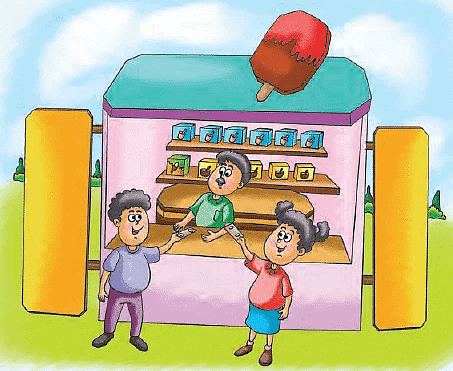 The answer is money!
The answer is money!- Money is used to buy things at a shop, online or in the market.
- In India, money or currency is in the form of rupees and paise.
- We use the symbol '₹' for rupee or rupees and 'p' for paisa or paise.
What Does Money Look Like?
- Money can look different in many ways! In India, we have shiny coins and colourful notes.
- Coins can be small and round, like the ₹1 or ₹2 coin.
- Notes, like ₹10, ₹50, or ₹100, are made of paper and have bright colours, pictures of famous people, and designs of animals or places.
- Isn't it fun to see how each coin and note is special?
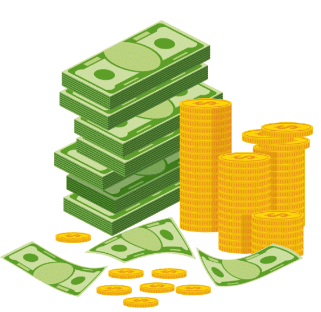
Coins
- Coins are small, shiny, and made of metal.
- They come in different sizes and shapes, like round ₹1 and ₹2 coins or even a ₹5 coin.
- Each coin has a number on it to tell us its value, like "1" for ₹1 or "10" for ₹10.
- Coins are fun to collect because some have pictures of famous people, animals, or special events.
- They’re also easy to carry in your pocket!

Notes
- Notes are colourful pieces of paper that show different amounts of money.
- They come in many sizes, like ₹10, ₹20, ₹50, and even ₹2000!
- Each note has a special design with pictures of famous people, buildings, and nature.
- You can also find big numbers on them to tell you their value.
- Unlike coins, notes are light and easy to fold, so you can keep them in your wallet or bag.
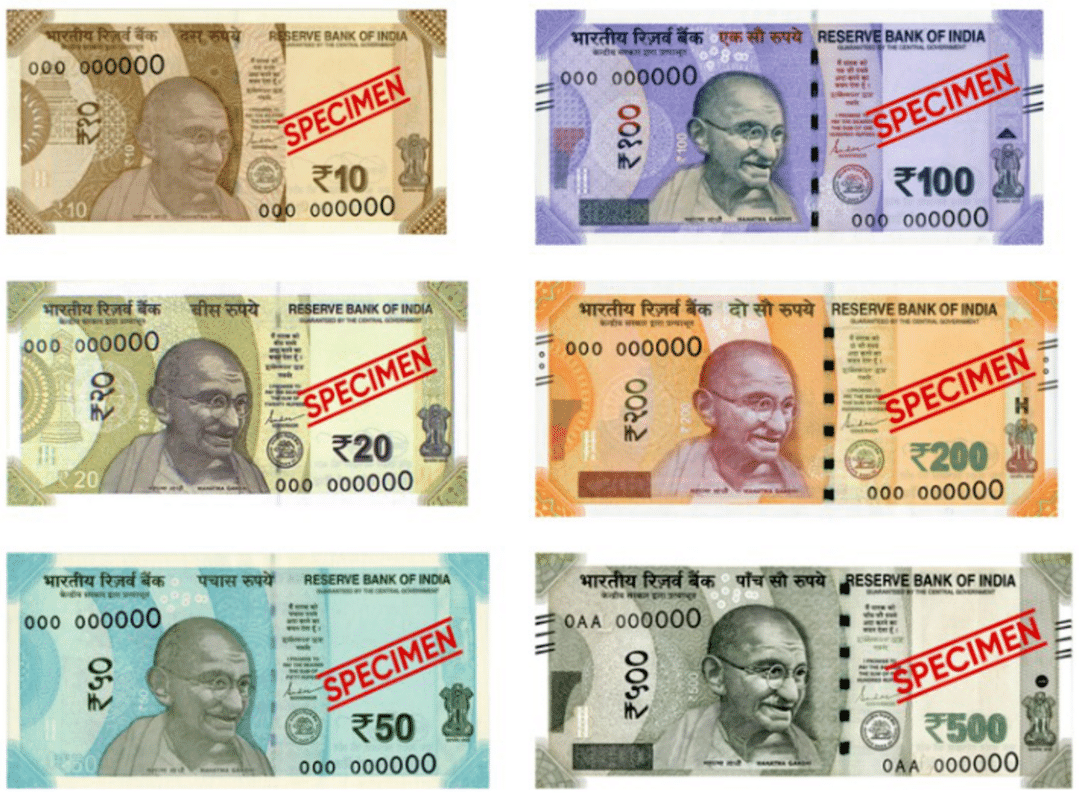
Let Us Count Money
- Counting money is like solving a fun puzzle!
- First, look at the coins and notes you have.
- Add up the values of each one.
- For example, if you have a ₹10 note and a ₹5 coin, you have ₹15 in total.
- Counting money helps you know how much you can spend or save.
- It’s an exciting way to learn math and feel like a grown-up!
Going to the Bookstore
Neerav and Nisha went to a shop to buy a book. It cost ₹ 30. They did not have an exact ₹ 30 to pay. They paid a ₹ 50 note to the shopkeeper. The shopkeeper returned ₹ 20 in the form of coins and notes of smaller values (denomination) as ₹ 10 + ₹ 5 + ₹ 5.
EduRev Tip: Notes and coins of higher denominations can be exchanged for smaller denominations.
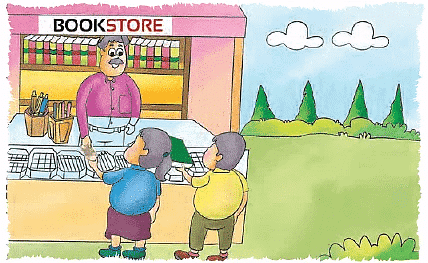
Money Stories in Real-Life Situations
Example 1: Somya bought a pizza for ₹ 70. She also bought popcorn for ₹ 25. How much did she pay for both? Somya paid ₹ 95 for both items.
Ans:
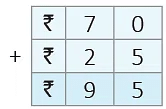
Example 2: A chocolate costs ₹ 18 but I have only ₹ 15. How much more money do I need to buy the chocolate? I need ₹ 3 more to buy the chocolate.
Ans:
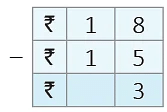
Activity
Learning Objective: Understanding and practising handling notes and coins up to rupees 20 in daily life
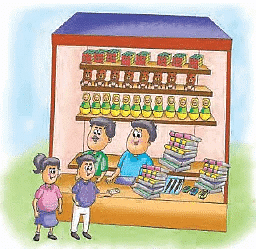 Preparation:
Preparation:- The teacher arranges play money and some wrappers of chocolates, wafers, empty pencil boxes, etc. (The teacher can ask the students to bring real small eatable packets.)
- The teacher prepares price tags for items with the
- Sets up real shopping scenarios with the help of volunteer students.
Working:
- Divide the students into groups of four.
- Give play money to all groups. Display items with their price tags.
- Let one group enact as sellers and other group as buyers.
- Pose a situation like- I want to buy a pencil box which costs say, ₹ 19.
- Check how do they do simple addition and subtraction of money by using different combinations of coins and notes (up to rupees 20 only).
- Repeat the activity with other groups and have fun.
The document How Much Can We Spend? Class 1 Notes Maths is a part of the Class 1 Course Mathematics for Class 1: NCERT (Joyful-Mathematics).
All you need of Class 1 at this link: Class 1
|
21 videos|118 docs|20 tests
|
FAQs on How Much Can We Spend? Class 1 Notes Maths
| 1. What are the different forms of money we commonly use? |  |
Ans. Money can come in various forms, including cash (coins and banknotes), digital currency (like cryptocurrencies), bank deposits, and checks. Each form serves as a medium of exchange, a unit of account, and a store of value.
| 2. How can I learn to count money accurately? |  |
Ans. To learn to count money accurately, start by practicing with physical coins and bills. Group similar denominations together and add them step by step. Online games and apps also provide interactive ways to practice counting money.
| 3. What are some real-life examples of money management? |  |
Ans. Real-life examples of money management include creating a budget to track income and expenses, saving for future goals, using cash for everyday purchases, and investing in stocks or savings accounts to grow wealth over time.
| 4. How do I determine how much money I can spend each month? |  |
Ans. To determine your monthly spending limit, calculate your total income and subtract essential expenses (like rent, utilities, and groceries). The remaining amount can be allocated to discretionary spending and savings.
| 5. Why is it important to understand the value of money? |  |
Ans. Understanding the value of money is crucial for making informed financial decisions, budgeting effectively, avoiding debt, and achieving financial goals. It helps individuals prioritize spending and develop good saving habits.
Related Searches



